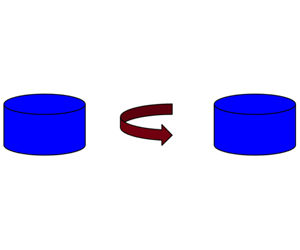Article contents
New scaling laws of passive scalar with a constant mean gradient in decaying isotropic turbulence
Published online by Cambridge University Press: 20 July 2020
Abstract

We use the Lie symmetry theory to derive new scaling laws for passive scalar dynamics under the influence of a constant mean gradient of the scalar in decaying homogeneous isotropic turbulence. For this purpose, we apply symmetry analysis to the equations for two-point correlation of the scalar and velocity fluctuations. It is shown that, in contrast to the classical self-similarity approach, the general invariant solutions, respectively scaling laws, of the two-point functions are constructed using the symmetry approach, without requiring an a priori set of similarity scales to carry on the analysis. In the context of the current analysis also, scaling laws for one-point quantities of the scalar variance  $\overline{\unicode[STIX]{x1D703}^{2}}$, the transverse scalar flux
$\overline{\unicode[STIX]{x1D703}^{2}}$, the transverse scalar flux  $\overline{u_{2}\unicode[STIX]{x1D703}}$ and the variance of the turbulent velocity fluctuations
$\overline{u_{2}\unicode[STIX]{x1D703}}$ and the variance of the turbulent velocity fluctuations  $\overline{u^{2}}$ are established, which are essentially related to the scaling symmetries. A key step to derive the scaling laws is the symmetry breaking induced by the constant mean scalar gradient. We use the results of a highly resolved direct numerical simulation of Gauding et al. (Comput. Fluids, vol. 180, 2019, pp. 206–217) to verify the scaling laws and the self-similarity of the two-point correlation functions. It is shown that the general symmetry solutions obtained from symmetry results provide a very good similarity to these functions.
$\overline{u^{2}}$ are established, which are essentially related to the scaling symmetries. A key step to derive the scaling laws is the symmetry breaking induced by the constant mean scalar gradient. We use the results of a highly resolved direct numerical simulation of Gauding et al. (Comput. Fluids, vol. 180, 2019, pp. 206–217) to verify the scaling laws and the self-similarity of the two-point correlation functions. It is shown that the general symmetry solutions obtained from symmetry results provide a very good similarity to these functions.
JFM classification
Information
- Type
- JFM Papers
- Information
- Copyright
- © The Author(s), 2020. Published by Cambridge University Press
References
- 5
- Cited by

